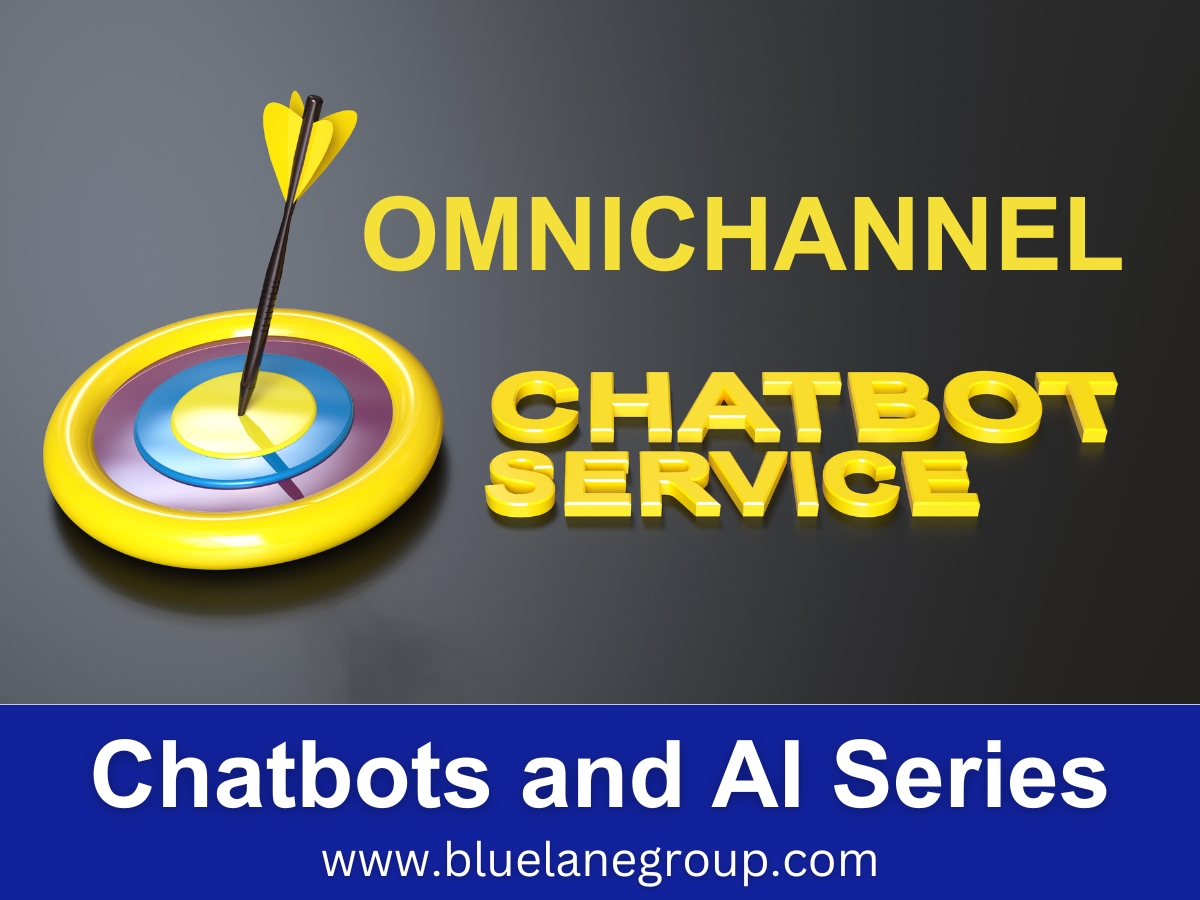In this comprehensive chatbots and AI series roundup, we dive deep into the realm of the best chatbots for customer service excellence. As businesses seek to enhance customer satisfaction and streamline operations, embracing top-tier chatbots has become pivotal in crafting exceptional service experiences.
A Glimpse for the Forward-Thinking Entrepreneur:
- Best chatbots for customer service stand out due to their capabilities in understanding and addressing user queries promptly and effectively. These chatbots have advanced features like sentiment analysis, proactive engagement, and personalized responses, ensuring that every customer interaction is meaningful and satisfactory.
- Companies adopting these elite chatbots reap manifold benefits. Not only do they achieve significant reductions in customer service wait times, but they also garner increased customer loyalty and satisfaction. The fusion of AI, NLP, and other cutting-edge technologies in these chatbots ensures seamless interactions that resonate with today’s discerning customers.
By tapping into the potential of top-tier customer service chatbots, businesses position themselves at the forefront of digital innovation. This step ensures streamlined operations and reduced overheads and fosters an environment of trust and reliability, making brands the preferred choice in a crowded market landscape.
Welcome to the pillar Blue Lane Group article in the Best Chatbots for Customer Service: Blueprint for Success in 2023 series. These posts examine the essential chatbot topics of customer service automation, exploring how chatbots revolutionize interactions, enhance user satisfaction, and redefine the benchmarks for excellence in modern customer-centric businesses.
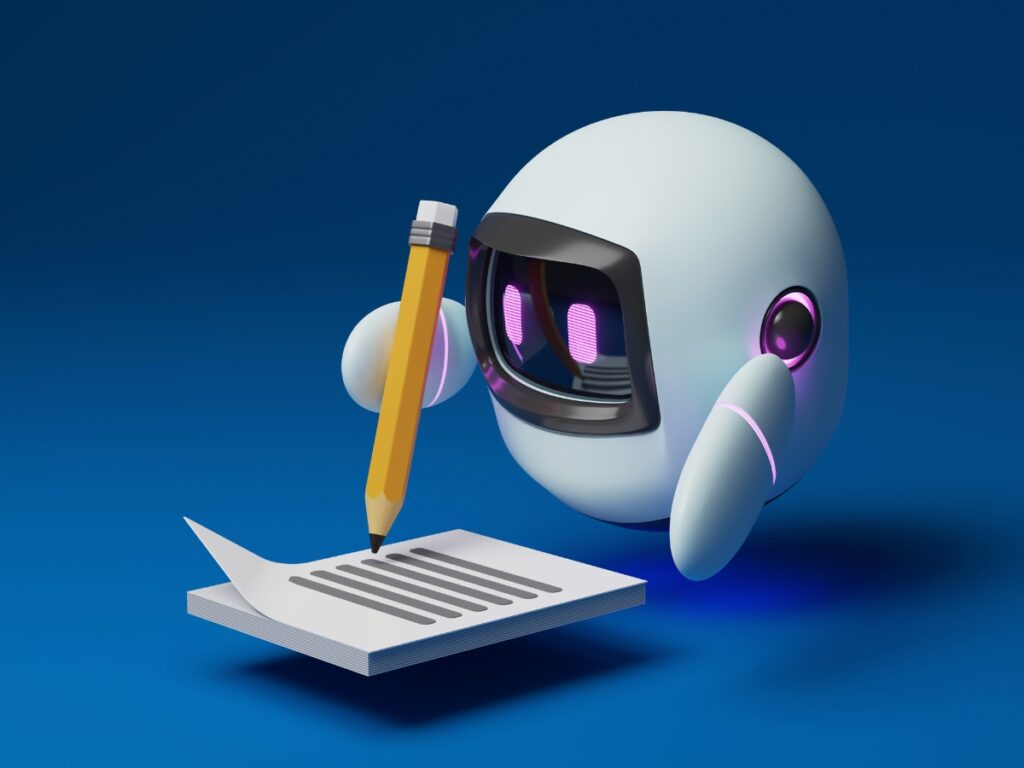
Disclosure: The digital products mentioned in this article are highly regarded in the marketplace and are endorsed by the Blue Lane Group staff. We may earn a commission at no additional cost if you purchase through the provided links.
Table of Contents
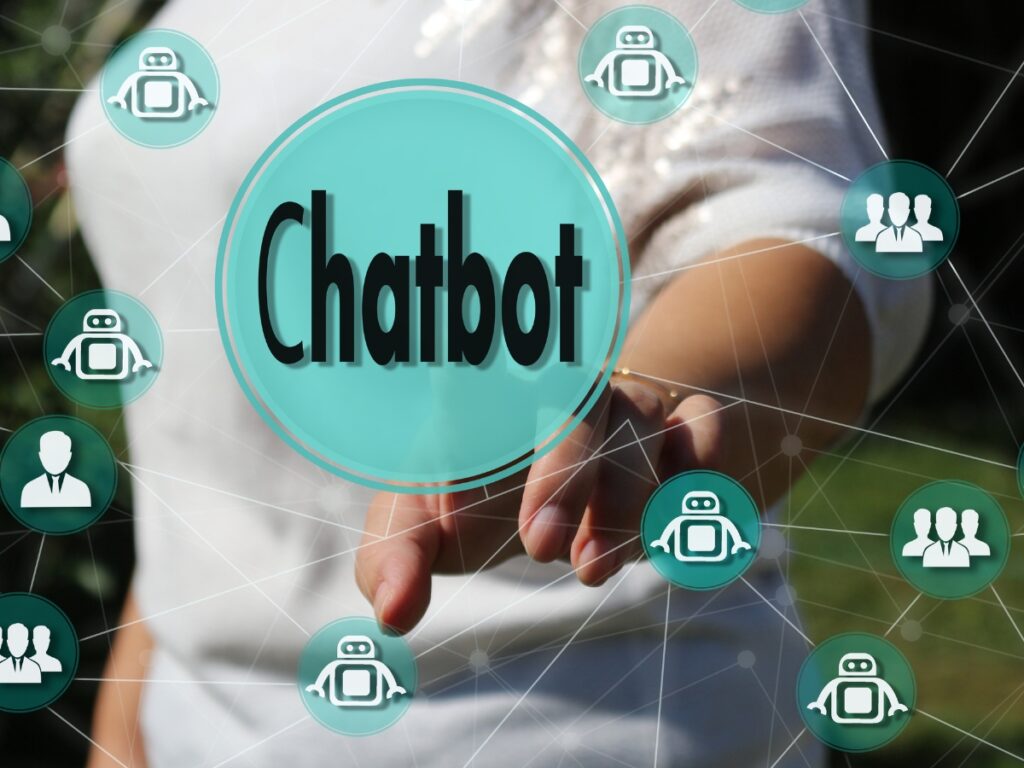
Introduction to the Importance of Chatbots in 2023
In the digital age, staying ahead of the curve is paramount, especially in customer service, where instantaneous responses have become the norm. As we navigate 2023, the best chatbots for customer service are no longer a luxury but a necessity for businesses aiming to maintain a competitive edge.
The continuous advancements in AI and machine learning have propelled chatbots from mere scripted responders to intelligent, conversational agents that can mimic human interactions. This transition has not only changed the way businesses interact with their customers but has also reshaped user expectations.
Background of chatbot evolution
The evolution of chatbots is a tale of technological progression. Initially, chatbots were simple decision-tree structures, providing predetermined answers to specific queries. However, the past decade has seen a rapid shift, with AI and machine learning playing pivotal roles.
Modern chatbots, especially those designed for customer service, can understand user query context, sentiments, and nuances. Platforms like Chatfuel and MobileMonkey have been at the forefront, offering AI-driven solutions that continuously learn and adapt.
With NLP (Natural Language Processing) integration and constant data feed, today’s chatbots are light years ahead of their predecessors, offering a seamless blend of automation and personalization.
Importance of chatbots in modern customer service
In the realm of customer service, chatbots have transformed the way businesses engage with their audience. Quick response times, 24/7 availability, and consistent interactions are just a few benefits that chatbots bring to the table.
Furthermore, platforms like Aivo and Landbot.io harness the power of AI to deliver hyper-personalized experiences, which often result in increased customer loyalty and sales conversions.
As businesses strive to meet the growing demands of tech-savvy consumers, the best chatbots for customer service have emerged as invaluable assets, bridging the gap between human touch and automated efficiency.
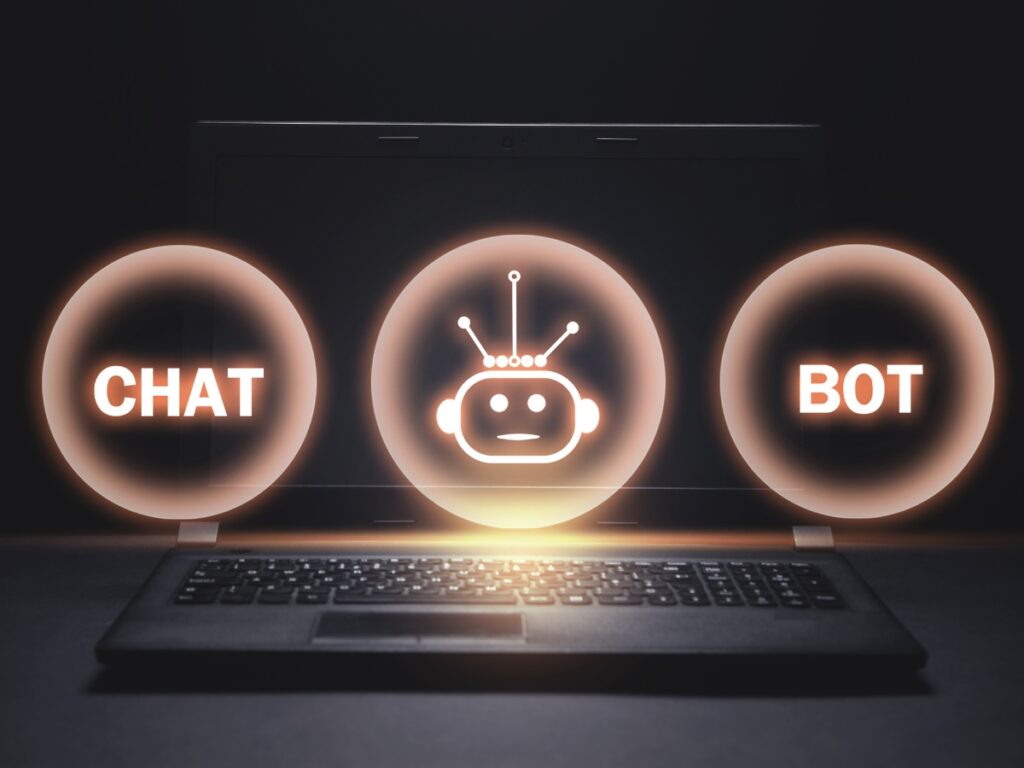
The Critical Need for Customer Service Chatbots
In today’s fast-paced digital world, instant gratification is not just a preference—it’s an expectation. Consumers demand immediate responses to their queries and concerns.
Chatbots, incredibly the best for customer service, have emerged as the go-to solution to meet this critical need. They not only ensure round-the-clock availability but also guarantee consistent, error-free responses.
Platforms like ManyChat and Octane AI emphasize the significance of timely engagement, ensuring that businesses never miss out on potential opportunities or risk customer dissatisfaction due to delays.
Evolution of customer service in the digital age
Customer service transformation in the digital age is nothing short of revolutionary. Gone are the days of long wait times on hold and restricted hours of operation. With digital platforms and tools, customer service has become a 24/7 operation.
The introduction of chatbots, powered by media such as Wit.ai and Dialogflow, further accelerated this evolution. These AI-driven agents have enabled businesses to engage with consumers on various platforms—websites, social media channels, or messaging apps.
As a result, the boundary between customer service and marketing has blurred, allowing for more integrated and holistic user experiences.
How chatbots meet modern consumer expectations
Modern consumers are well-informed, tech-savvy, and have little patience for inefficiencies. They expect quick, relevant, and accurate responses, regardless of the hour. This is where chatbots, especially those powered by AI, shine.
With their ability to process vast amounts of data in real time, chatbots can provide personalized responses tailored to individual user needs. Botpress and Botsify, for instance, harness AI capabilities to ensure that their chatbots can answer queries and predict and anticipate user needs.
By doing so, chatbots exceed reactive responses and venture into proactive engagement, aligning perfectly with the modern consumer’s expectations.
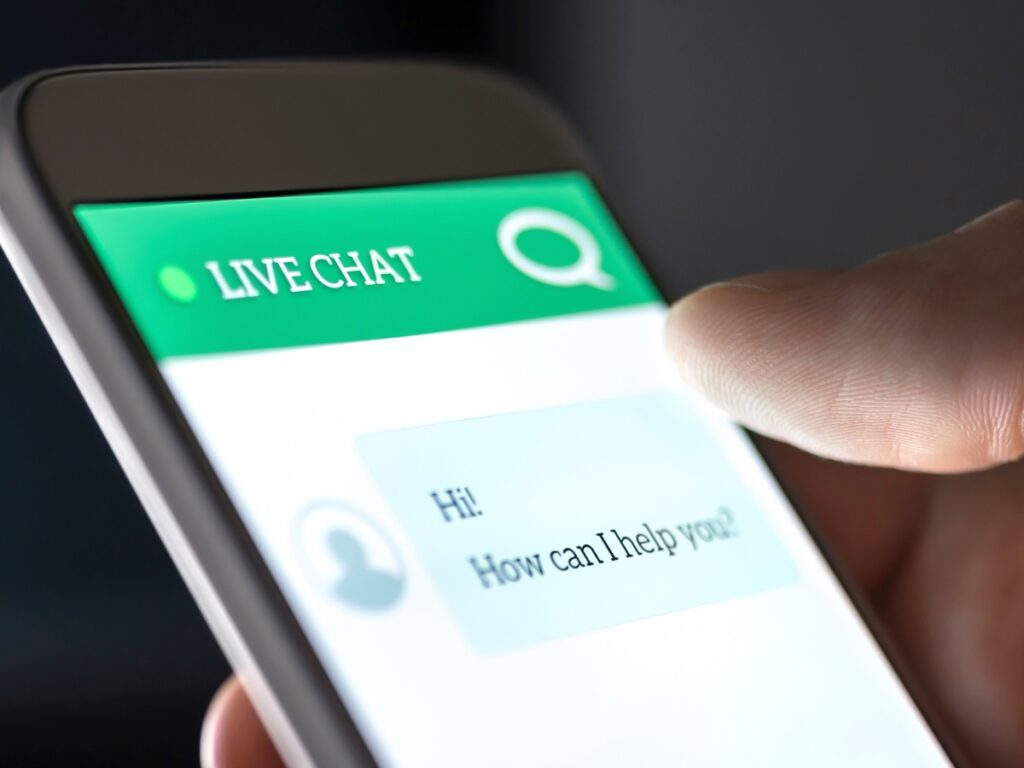
Delving into the Mechanics: How AI Powers the Best Chatbots
The true prowess of the best chatbots for customer service lies in their underlying technology: Artificial Intelligence. AI isn’t just a fancy term or a buzzword in this context; it’s the engine that drives these chatbots, enabling them to understand, learn, and adapt.
Pioneers in the field, such as IBM Watson Assistant and Landbot.io, have crafted sophisticated AI mechanisms to power their chatbot solutions. These mechanisms ensure that chatbots can understand complex user queries, evolve, and provide timely, relevant responses without human intervention.
A brief on Natural Language Processing (NLP)
Natural Language Processing, commonly called NLP, is a subfield of AI that focuses on the interaction between computers and humans through natural language. In the context of chatbots, NLP is the magic that allows bots to understand and interpret human speech.
Platforms like Chatfuel and Dialogflow leverage NLP to ensure their chatbots comprehend user inputs accurately, even if they’re phrased differently or contain colloquialisms. This understanding extends beyond keyword recognition, enabling chatbots to grasp context, sentiment, and intent.
Chatbots can engage in more human-like conversations through NLP, thus enhancing the overall user experience.
Machine learning’s role in adaptive chatbot behavior
Machine learning, another facet of AI, plays a pivotal role in the adaptability of chatbots. Unlike traditional software that relies on predefined rules, machine learning enables chatbots to learn from data, user interactions, and feedback.
Over time, platforms like MobileMonkey and Rasa utilize machine learning to ensure their chatbots better predict user needs, offer more accurate responses, and anticipate potential issues or queries. This adaptability ensures the chatbot’s continued relevancy and leads to more efficient and personalized user interactions, setting the gold standard for modern customer service.
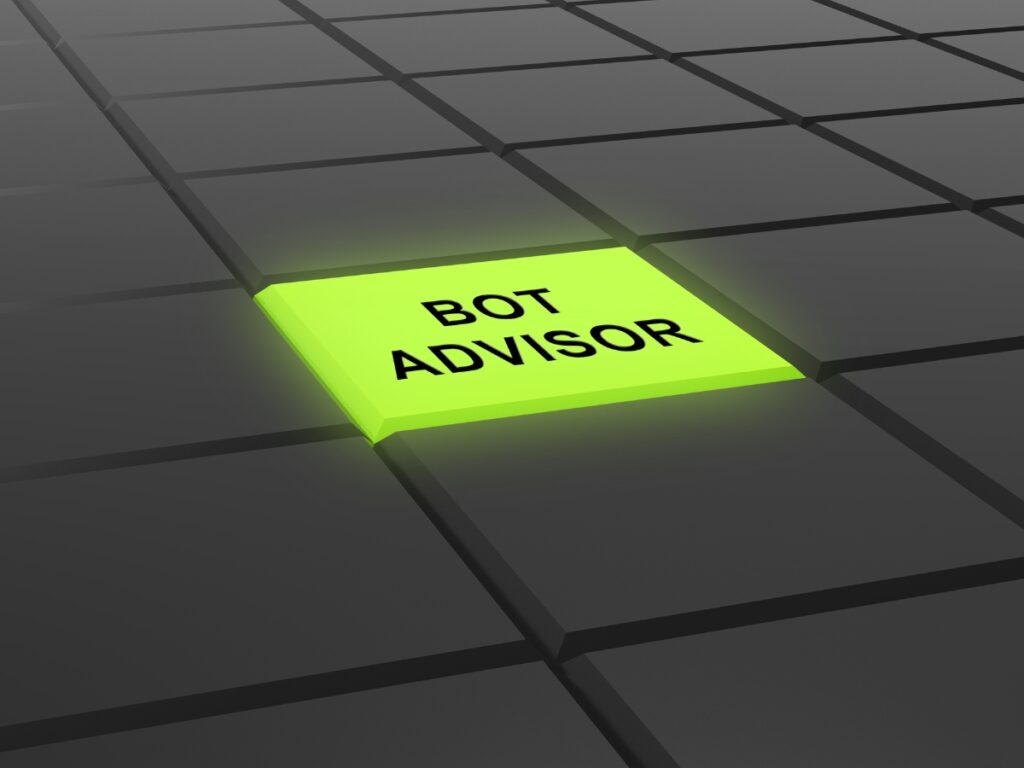
Features That Distinguish the Best Chatbots for Customer Service
In the competitive realm of AI-driven chatbots, only the best chatbots for customer service stand out, serving as invaluable assets for businesses. Their distinction lies in their AI capabilities and a combination of features that prioritize user needs, integration, and seamless functionality.
Companies like Aivo and Octane AI have carved niches for themselves by ensuring their chatbots excel in these pivotal areas, setting benchmarks for the industry.
User-friendly interface and experience
At the heart of any successful chatbot lies its user interface and overall user experience. It’s not just about answering queries but ensuring users can interact with the chatbot easily and intuitively. For instance, Landbot.io has garnered acclaim for its intuitive chatbot designs that mimic natural conversations.
A user-friendly interface ensures that users aren’t frustrated or lost in the interaction. The design should be clean, the flow logical, and the responses concise yet informative. Animated prompts, guided choices, and interactive elements enhance the experience, making the chat more engaging and effective.
Integration capabilities across platforms
Integration is another cornerstone for the success of a chatbot. The best chatbots can seamlessly integrate with many platforms, from websites to social media channels, CRMs to eCommerce systems. This ensures that businesses can engage their customers wherever they are.
Botsify, for instance, excels in creating AI-powered chatbots tailored mainly for Facebook Messenger. At the same time, Chatfuel and MobileMonkey offer solutions that can integrate across various platforms, ensuring a consistent user experience.
Such integrative prowess means businesses can maintain a unified brand voice and customer service standard, regardless of where the interaction occurs.
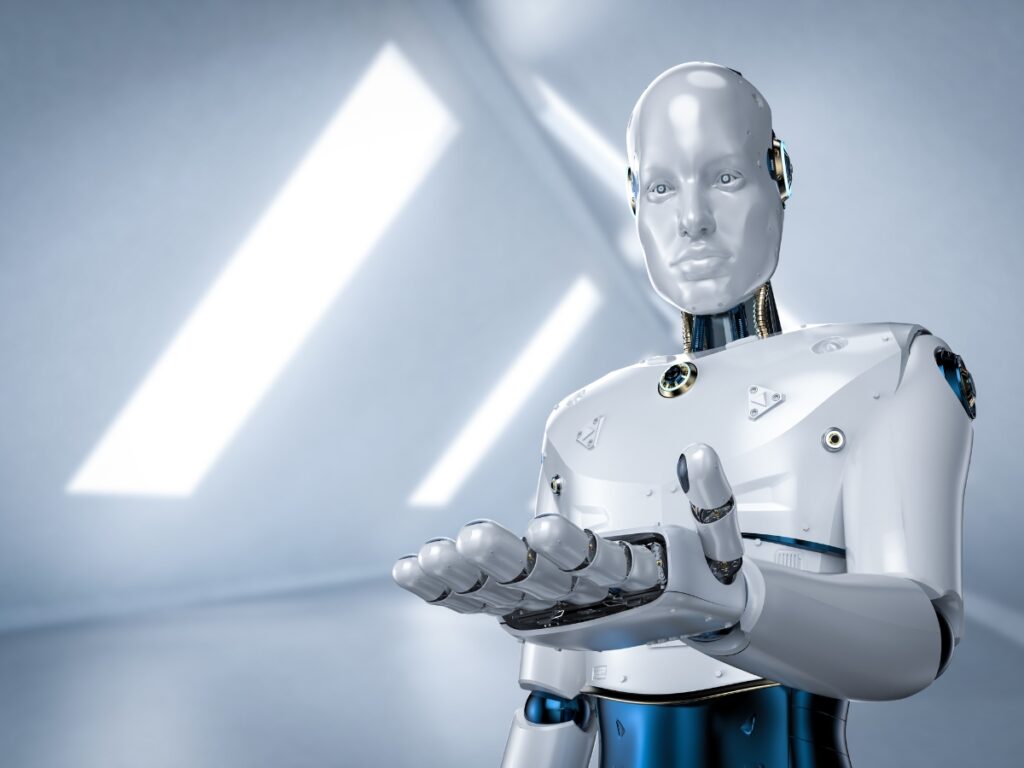
Multilingual Support and Global Audience Reach
In an interconnected world, businesses are no longer confined to local markets. With the rise of e-commerce and global digital platforms, reaching a worldwide audience is not just a possibility but a necessity—one of the features that the best chatbots for customer service offer is multilingual support.
Platforms like Aivo and Chatfuel understand the significance of this and have incorporated features to cater to users from different linguistic backgrounds. This ensures the chatbot can communicate effectively with users from various regions, breaking down language barriers and providing a personalized experience.
For instance, Bold360 has crafted solutions that allow businesses to interact with a global audience without any linguistic restrictions. Having a chatbot that can converse in multiple languages boosts brand reach and ensures that customers, irrespective of their location or language, receive consistent quality service.
Real-time analytics and feedback mechanism
Understanding user interactions and gauging the effectiveness of chatbot responses is crucial for continuous improvement. That’s where real-time analytics come into play. Platforms like Imperson and Landbot.io provide businesses with detailed insights into user interactions, chatbot performance, and areas of improvement.
These insights range from the most frequently asked questions to user satisfaction scores. A built-in feedback mechanism, like the one offered by Gupshup, enables users to rate their chatbot interaction, providing businesses with direct feedback.
This combination of real-time analytics and instant feedback ensures that chatbots remain efficient, and companies can tweak strategies or responses based on actual user data and feedback, maintaining an ever-evolving and optimized customer service channel.
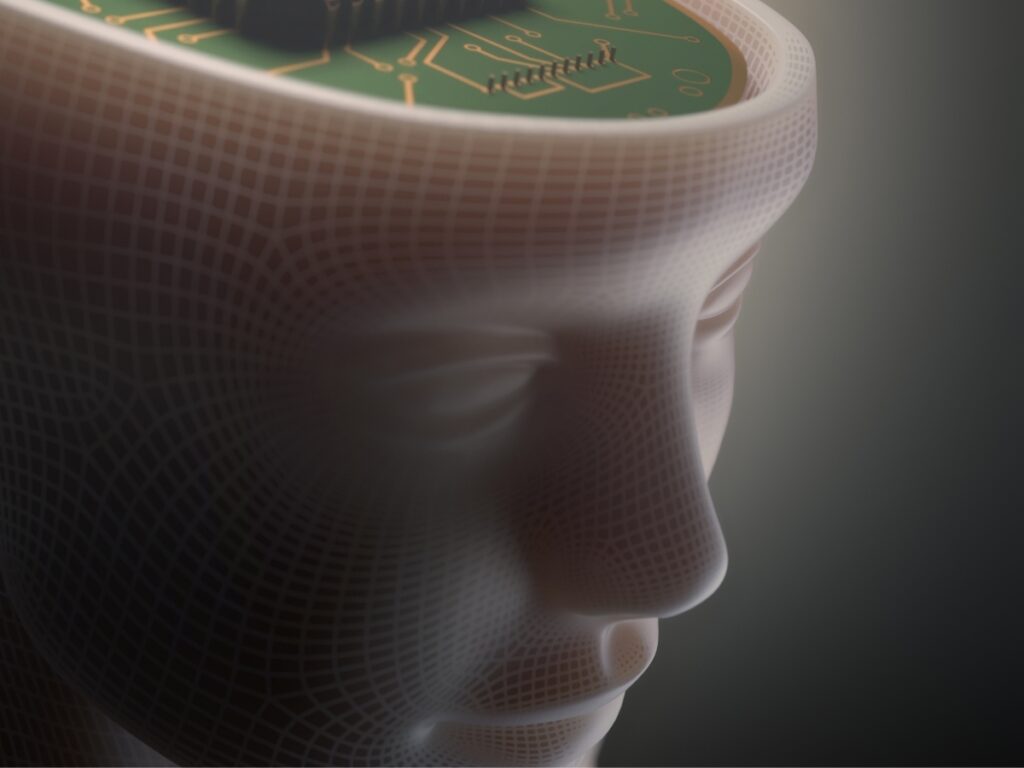
Case Studies: Brands Transforming Customer Service with Chatbots
The theoretical benefits of chatbots are well-documented, but nothing speaks louder than real-world results. Several brands have incorporated the best chatbots for customer service into their strategies and have reaped significant benefits.
These case studies offer valuable insights into chatbot implementation’s practical applications, challenges, and successes.
Real-world examples of chatbot success stories
Aivo’s foray into chatbots offers a shining example. With their AI-powered AgentBot, they provided enhanced customer support, resulting in higher user satisfaction and reduced response times. Similarly, Botsify tailored its chatbots for Facebook Messenger, which led to increased user engagement and a surge in messenger-based queries.
ManyChat is another success story, where its integration into Facebook Messenger transformed marketing and support for many businesses. Their approach to e-commerce and proactive customer engagement proved beneficial for brands looking to increase sales and enhance the user journey.
Lastly, MobileMonkey demonstrated how businesses could interact with customers across various social media platforms. Their chatbot solutions fostered deeper engagement, ensuring customers received timely and relevant responses.
Lessons learned and best practices derived.
From these success stories, several lessons and best practices emerge. Firstly, it is crucial to understand your target audience and tailor chatbot interactions to their preferences. Platforms like Chatfuel have emphasized the importance of personalized interactions, leading to better user satisfaction.
Secondly, integration across platforms, as showcased by Bold360, ensures a consistent user experience, irrespective of where the user interacts with the brand.
Lastly, continuous learning and adaptation are vital. Gupshup and Rasa have demonstrated that the most successful chatbots learn from user interactions, adapting and improving their responses over time. This ensures relevancy and fosters trust and reliability in the chatbot, enhancing the user experience.
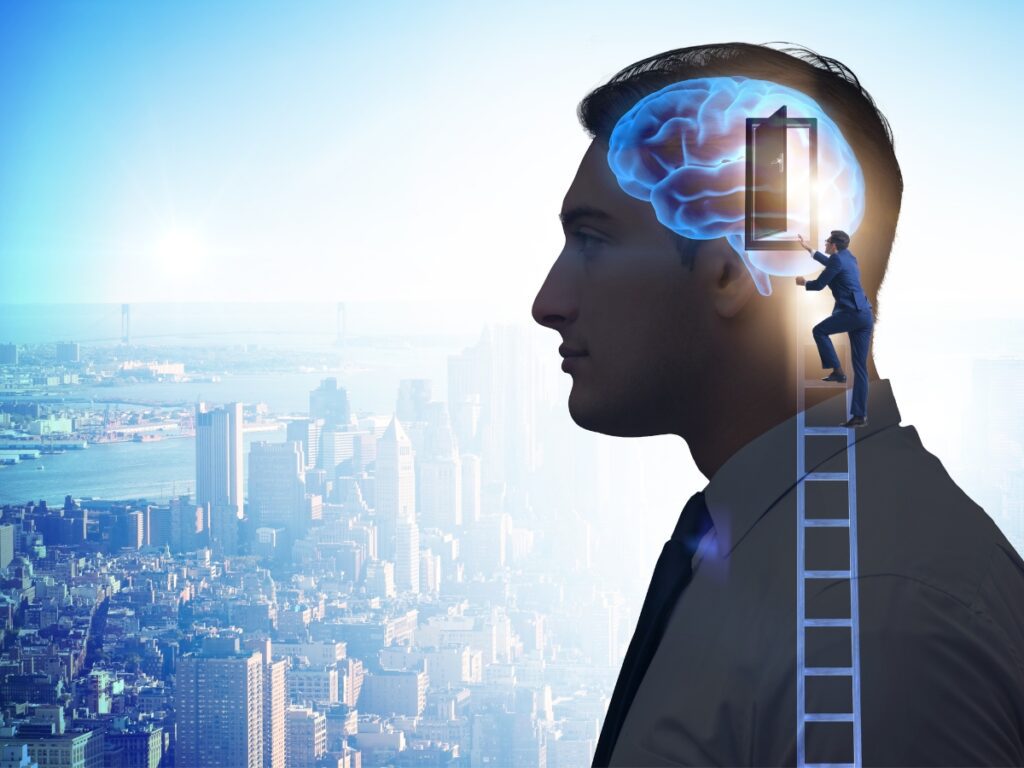
Implementing Chatbots: The Step-by-Step Blueprint for Success in 2023
In 2023, the landscape of chatbots has become more sophisticated and intricate. Brands recognize the value of the best chatbots for customer service, but the challenge lies in implementation. To ensure success, a well-thought-out blueprint is essential.
This step-by-step guide is designed to help businesses navigate the process and ensure they’re leveraging chatbots to their full potential.
Initial assessment and goal definition
Before diving into chatbot integration, it’s vital to understand your brand’s unique needs. Start by assessing your current customer service landscape. What are the pain points? Where do customers seek information or assistance? Understanding these aspects will help in defining clear goals for your chatbot.
For instance, if a brand finds its customer service team overwhelmed with basic queries, the goal might be to use a chatbot to handle frequently asked questions. On the other hand, if user engagement on a particular platform like Facebook is the focus, platforms like Botsify or ManyChat, which specialize in messenger interactions, could be more apt.
Choosing the right chatbot platform
Once goals are defined, the next crucial step is selecting the appropriate chatbot platform. This decision is paramount, as the venue will directly influence the chatbot’s efficiency and effectiveness.
Businesses looking for tailored solutions for specific platforms like Facebook, Chatfuel, and ManyChat stand out. For those who prioritize open-source flexibility, Botpress offers a range of tools to build AI-driven bots. If AI-powered personalized interactions are the end goal, Aivo’s AgentBot comes highly recommended.
Moreover, consider factors like ease of integration, scalability, and support provided by the platform. Some platforms like Landbot.io emphasize intuitive design and consistency across channels. In contrast, solutions like Octane AI might appeal more to e-commerce brands looking for chatbot solutions that integrate seamlessly with platforms like Shopify.
Remember, the chosen platform should align with the current goals and be flexible enough to accommodate future scaling and evolving customer needs.

Integration with existing customer service infrastructure
To ensure the best chatbots for customer service truly enhance user experience, seamless integration with the existing customer service infrastructure is crucial. A disjointed system can lead to information silos, causing inefficiencies and potentially frustrating customers.
For instance, if a company uses CRM software to manage customer interactions, the chatbot should be able to pull relevant data from this system. This ensures continuity in conversations and provides users with accurate, up-to-date information. Platforms like Dialogflow and Microsoft Bot Framework are known for their integration capabilities, allowing for smooth synchronization with various tools and databases.
Furthermore, ensuring the chatbot can hand off more complex queries to human agents without hiccups is essential. This requires integrating chatbots into the broader customer service team’s workflow, providing a cohesive and uninterrupted user journey.
Training the chatbot and iterative improvement
Building a chatbot is not a one-time effort. It requires continuous training, especially if AI powers it. Initially, you might start with a predefined set of queries and responses. However, as user interactions grow, platforms like Rasa and Wit.ai employ machine learning to understand nuances, slang, and specific user terminologies.
Chatbots can become more accurate and context-aware by constantly feeding new data, refining responses, and using platforms that support continuous learning. MobileMonkey is a platform that emphasizes this iterative improvement, ensuring chatbots remain relevant and practical.

Monitoring performance and adapting to feedback
Feedback is the cornerstone of improvement. Once the chatbot is live, analytics tools integrated within platforms like Pandorabots or Flow XO can offer insights into user interactions. These insights might include common queries, points of user drop-off, and overall chatbot effectiveness.
Furthermore, direct user feedback is invaluable. Soliciting feedback post-interaction or through periodic surveys can provide a wealth of information. Businesses should be agile in adapting to this feedback, tweaking chatbot responses, or even restructuring the chatbot’s flow based on user needs.
Remember, staying static is not an option in the dynamic customer service landscape. Continuous monitoring and adaptation ensure that chatbots remain an asset, not a liability.
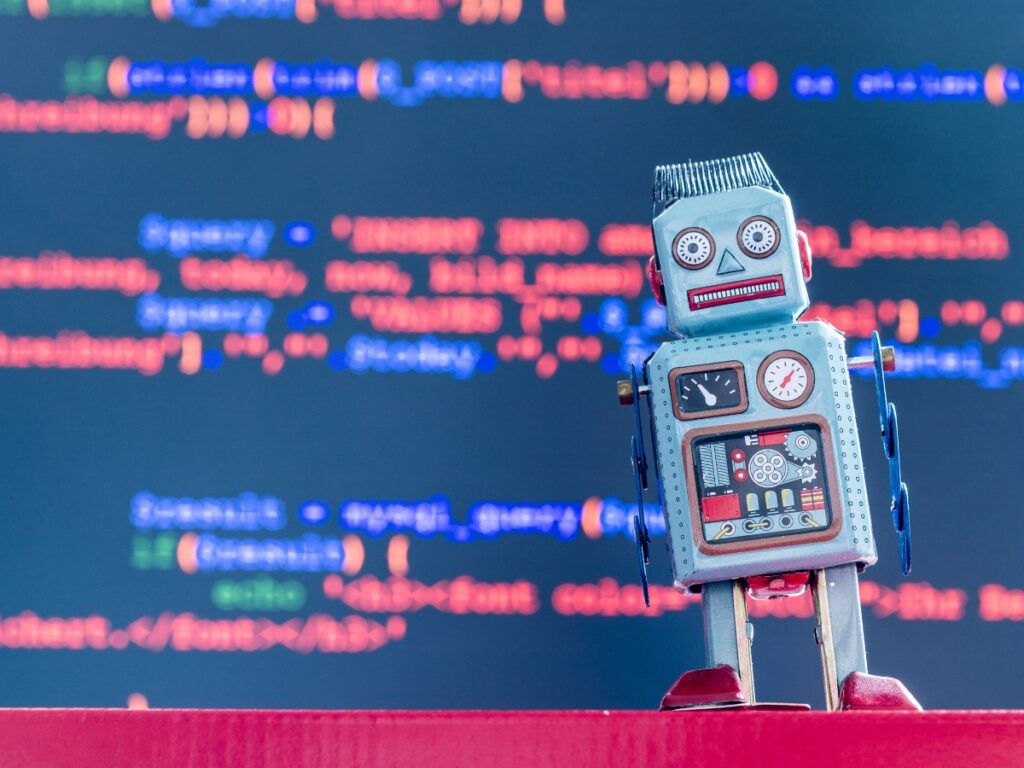
Overcoming Challenges in Chatbot Implementation
While chatbots, incredibly the best for customer service, have revolutionized how businesses interact with customers, implementing them is not without challenges. These obstacles can range from technical glitches to user experience issues.
Navigating these challenges requires foresight, planning, and an understanding common pitfalls.
Common pitfalls in chatbot deployment
One of the most common pitfalls is setting unrealistic expectations. Many businesses expect chatbots, especially AI-powered, to be a panacea for all customer service woes. However, even the best chatbots can fall short without proper training and fine-tuning.
Another issue is the lack of human touch. While platforms like Botsify and Chatfuel offer advanced AI capabilities, they cannot fully replicate human empathy. Over-relying on chatbots can sometimes lead to impersonal interactions, potentially alienating customers.
Furthermore, poor integration with existing systems can lead to disjointed user experiences. If a chatbot can’t access relevant customer data or smoothly hand off complex issues to human agents, it can frustrate users.
Lastly, a lack of continuous improvement can render a chatbot obsolete. As user behaviors and preferences evolve, so should the chatbot. Relying on static scripts and not updating the chatbot’s knowledge base can lead to outdated and irrelevant interactions.
Solutions and best practices to navigate these challenges
To mitigate these challenges, it’s essential to set clear and realistic goals for the chatbot. Understanding its capabilities and limitations will ensure it complements rather than replaces human agents.
For the impersonal interaction issue, platforms like Landbot.io have features that allow for a blend of automated and human responses, ensuring users feel heard and valued.
Ensuring seamless integration is also paramount. Tools like IBM Watson Assistant offer robust integration capabilities, allowing chatbots to function as a cohesive part of the broader customer service ecosystem.
Continuous learning and adaptation are non-negotiable. Using analytics tools in platforms like Octane AI can provide insights into chatbot performance, guiding iterative improvements.
Lastly, regular feedback solicitation from users can offer a goldmine of information, ensuring chatbots remain relevant, effective, and aligned with user expectations.

Looking to the Future: Predictions and Trends for 2023 and Beyond
The realm of chatbots, especially when discussing the best chatbots for customer service, is ever-evolving. As technology advances, so does the sophistication and capabilities of chatbots.
Companies continually search for new ways to leverage these tools to enhance customer interactions, streamline operations, and tap into new revenue streams. As we look to the horizon, several trends and predictions emerge, signaling a transformative period for chatbots in the coming years.
Integration of more advanced AI capabilities
As artificial intelligence matures, so does its application in chatbots. Platforms like Dialogflow and Rasa are already pushing the boundaries of what’s possible. Shortly, expect chatbots to possess more advanced contextual understanding, predictive analytics, and emotional intelligence. Chatbots could potentially anticipate user needs before expressing them, offering solutions proactively.
Moreover, the intersection of AI with other technologies like Augmented Reality (AR) and Virtual Reality (VR) could result in more immersive chatbot experiences. Imagine a customer service interaction where the AR chatbot can visually guide a user through a product setup or troubleshooting process.
Chatbots in omnichannel customer service
Omnichannel customer service isn’t new, but chatbots will be increasingly central. As consumers continue to engage with brands across multiple touchpoints — be it social media, websites, voice assistants, or even physical stores — chatbots will ensure a consistent and seamless experience across these channels.
Platforms such as MobileMonkey and Flow XO are gearing up to offer solutions that integrate chatbots seamlessly across these diverse platforms, ensuring users have a consistent brand experience wherever they interact.
Ethical considerations in AI and chatbot use
Ethical considerations will take center stage with the rise of more advanced AI in chatbots. Concerns about data privacy, bias in AI algorithms, and the potential misuse of chatbots for deceptive practices exist. As chatbots become more prevalent, there will be a push for more transparent algorithms, ethical data usage, and clear disclosure to users when interacting with a bot versus a human.
Platforms like Botpress and IBM Watson Assistant are at the forefront of addressing these ethical concerns, ensuring that the chatbots they power are both practical and responsible.
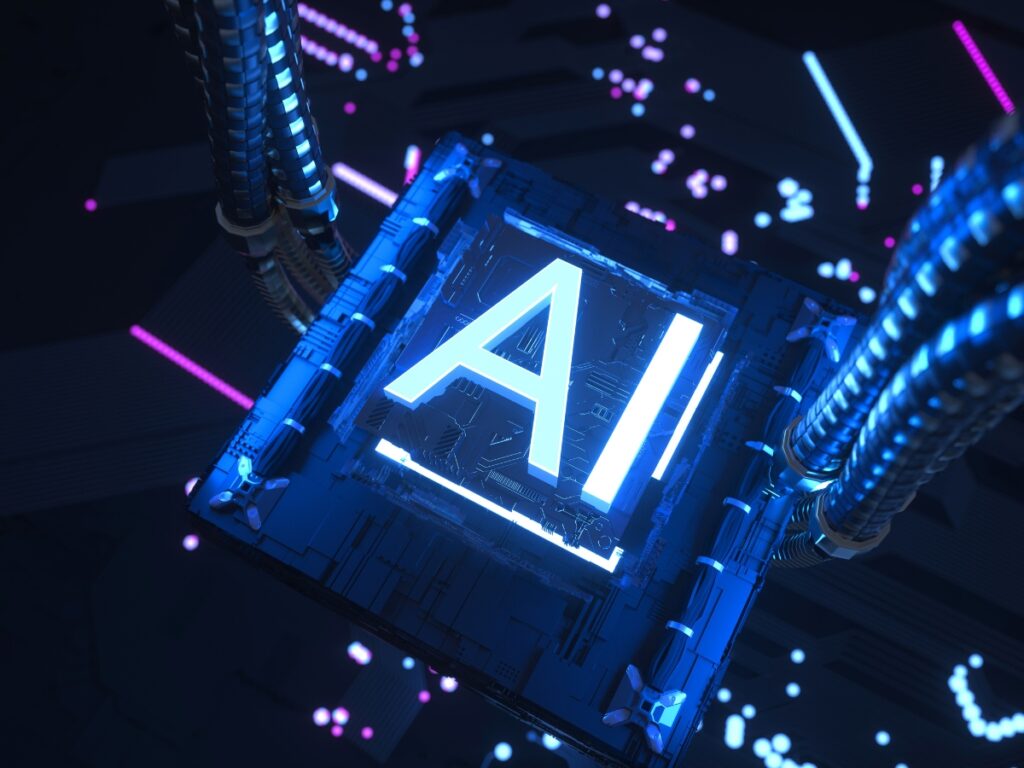
Frequently Asked Questions about the Best Chatbots for Customer Service in 2023
Businesses and users alike often have several queries about how to best leverage these tools for optimal customer service in the constantly evolving domain of chatbots. As AI continues to push the boundaries of what’s possible, it’s essential to stay informed and understand the nuances of this transformative technology.
Here are some of the most frequently asked questions about the best chatbots for customer service as we venture into 2023.
- What distinguishes the best chatbots for customer service from standard chatbots? While traditional chatbots may offer essential query resolution, the best chatbots for customer service come equipped with advanced AI capabilities, offer personalization, integrate across multiple platforms, and often have robust analytical tools to improve the user experience continuously.
- How do AI-powered chatbots enhance the user experience in customer service? AI-powered chatbots can understand context, utilize Natural Language Processing to comprehend and respond to queries more accurately, and even predict user needs based on past interactions and data. This leads to faster, more accurate, and personalized interactions.
- Are there any privacy concerns when using AI-driven chatbots for customer service? Yes, there are privacy concerns with collecting and analyzing user data. Businesses must be transparent about data usage, ensure data is securely stored, and allow users to opt out of data collection.
- Can chatbots fully replace human agents in customer service? While chatbots can handle a significant portion of standard queries and tasks, human agents are still essential for more complex issues or when a personal touch is needed. The best approach is often a hybrid one, where chatbots handle initial queries and escalate more intricate matters to human agents.
- How do businesses ensure their chatbots remain practical and up-to-date? Continuous training, leveraging analytics to understand user interactions, and gathering feedback is crucial. Many platforms, such as MobileMonkey and Chatfuel, provide tools to help businesses analyze, adapt, and improve their chatbots over time.
- Will the role of chatbots in customer service continue to grow beyond 2023? Given the current trends and the constant advancements in AI, it’s predicted that chatbots will play an even more integral role in customer service, with enhanced capabilities, more extensive integration, and greater user acceptance.
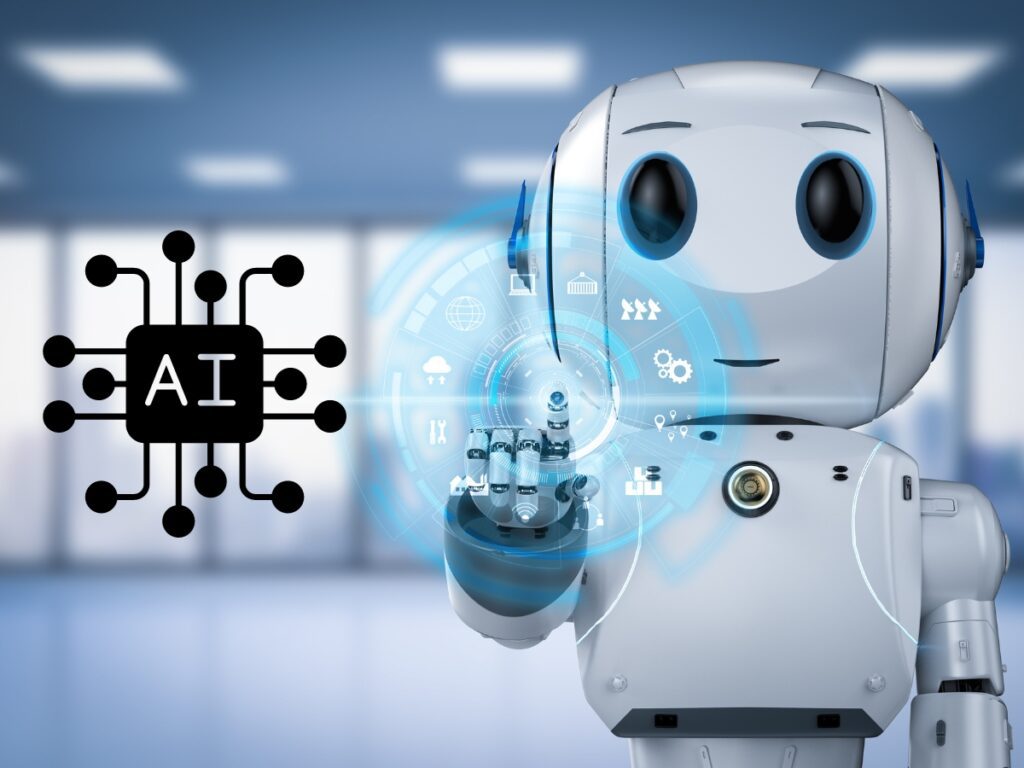
Conclusion: Why 2023 is the Year of the Chatbot in Customer Service
As we’ve navigated through the intricacies of chatbots, their evolution, and their undeniable impact on modern customer service, one thing stands clear: 2023 is poised to be a landmark year for this transformative technology.
From the early iterations of basic query bots to the advanced AI-driven solutions we see today, chatbots have changed how businesses interact with customers and set new standards for responsiveness, personalization, and efficiency.
The integration of advanced AI, natural language processing, and machine learning has propelled chatbots to the forefront of customer service innovation, making them indispensable tools for businesses seeking to thrive in the digital age.
Moreover, with real-world success stories demonstrating the profound impact of chatbots on customer satisfaction and operational efficiency, there’s never been a better time for businesses to embrace this technology. As the digital landscape evolves and consumer expectations rise, companies that proactively adapt and invest in the best chatbots for customer service will undoubtedly have a competitive edge.
As we venture further into 2023 and beyond, the message for businesses worldwide is clear: it’s time to harness the power of chatbots, adapt to the changing tides of consumer interaction, and position your brand for unparalleled success in customer service.
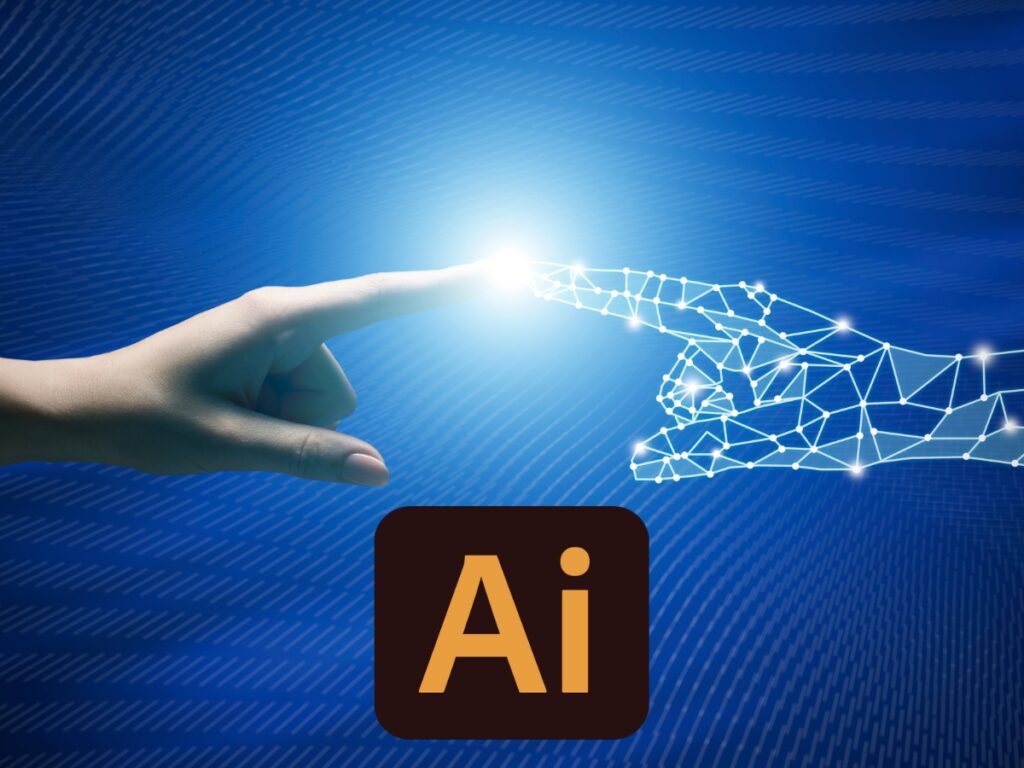
You Might Also Like:
If you enjoyed this article and received value from it, check out the other Blue Lane Group articles in the Best Chatbots for Customer Service: Blueprint for Success in 2023 series:
- Chatbot ROI: Unlock Unmatched Profits with Top 5 Strategies for Optimization
- Omnichannel Chatbots: Unlock Consistent Engagement with 7 Best Practices
- Chatbot KPIs: 10 Essential Metrics to Drive Optimal Results
- Multilingual Chatbots: Break Language Barriers with 8 Leading Solutions
- Enterprise AI Chatbot Solutions: 7 Key Tools to Supercharge Your Business
- Mastering Chatbot Training: 7 Strategies for Optimal User Engagement
- Chatbot APIs: 6 Leading Options for Seamless Functionality
- Chatbot Scripts: 9 Proven Strategies to Boost Conversions and Engagement
- Rule-Based Chatbots: Drive Consistent Responses with Top 9 Benefits
- Chatbot Success Metrics: Unlock Optimal Performance with Top 10 Insights
- Chatbot Analytics: Drive Excellence with 10 Essential Tools
- Mastering Interactivity: Top 10 Chatbot Frameworks Explored
- Chatbots in Retail: 7 Winning Strategies for Elevated Customer Engagement
- Chatbots for Lead Generation: 6 Best Practices to Transform Your Funnel
- Chatbot Integrations: 6 Essentials for Enhanced Productivity and Operations
- Chatbot UX: Enhance Engagement with These 8 Vital Principles
- Chatbot Security: 7 Essentials to Safeguard Your Business
- Chatbot Development Services: 7 Must-Knows to Boost Your ROI
- Chatbots in Healthcare: 6 Leading Innovations Revolutionizing Patient Care
- NLP for Chatbots: Top 6 Techniques Transforming Chat Experiences
- Benefits of Chatbots in Customer Service: 7 Key Sales Boosters
- 7 Essential Social Media Chatbots for Unmatched Engagement
- Building Chatbots Powered by AI: 5 Proven Techniques for Epic Profits


